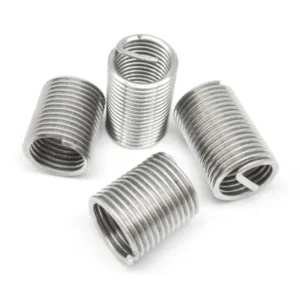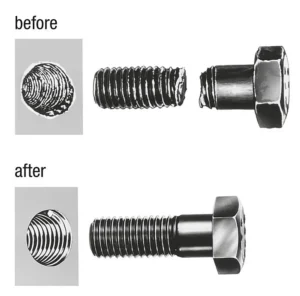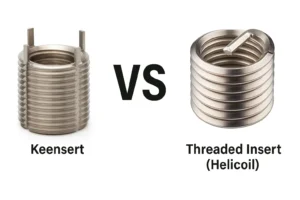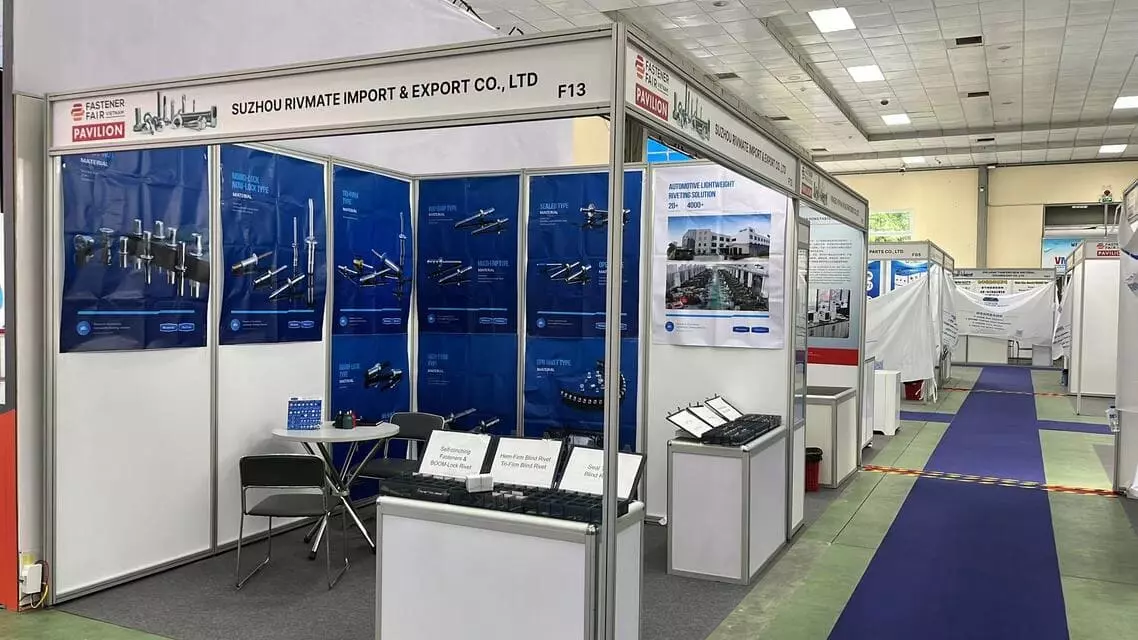Buy PEM Fasteners: Reliable Solutions for Every Need
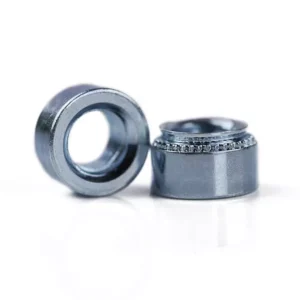
Leading Self-Clinching Fasteners Manufacturer and Supplier in China

Looking to enhance the durability and functionality of your projects? Buy PEM fasteners, renowned for their reliability and ease of use in a wide range of applications. Whether you’re working with metal, wood, or other materials, these fasteners provide strong, secure attachments. Read on to discover why you should buy PEM fasteners for your next project.
Table of Contents
What Are PEM Fasteners?
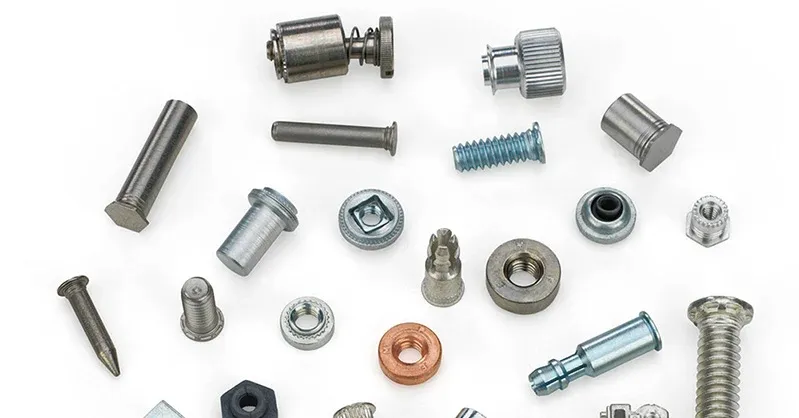
Definition and Principle
PEM® is a registered trademark of PennEngineering.
PEM fasteners, also known as self-clinching fasteners, are embedded fastener components specifically designed for metal sheet materials (such as aluminum, steel, stainless steel, etc.). The core principle is to insert the fastener into a pre-punched hole in sheet metal under high pressure, utilizing the material’s plastic deformation characteristics to create a permanent mechanical locking structure between the fastener and the base material. This installation process requires no welding, riveting, or adhesive bonding and typically completes in a single step, making it an efficient solution in modern industrial assembly.
Installation Process Example:
- Pre-punch a hole of specific size in the sheet metal.
- Align the self-clinching fastener with the hole.
- Press the fastener into place using a press machine.
- The sheet metal deforms under pressure, locking around the fastener’s groove or teeth to achieve a permanent fixation.

Core Advantages
- Simplified Assembly: One-step installation eliminates the need for welding, drilling, tapping, or other post-processing steps.
- Space Efficiency: The embedded design does not occupy space on the back side of the sheet metal, making it ideal for compact equipment.
- High Structural Strength: Forms an “interlocking” structure with the base material, providing superior pull-out and torsional resistance compared to traditional threaded connections.
- Lightweight Design: No need for additional nuts or backing plates, reducing the overall weight.
- Corrosion Resistance: Available in materials like stainless steel or galvanized coatings to withstand harsh environments.
Self-Clinching Fasteners vs. Traditional Fastening Methods
| Comparison Dimension | Self-Clinching Fasteners | Traditional Methods (Welding/Riveting/Standard Nuts) |
| Installation Complexity | One-step process, no secondary processing required | Requires welding, riveting, or additional fasteners (e.g., washers, nuts) |
| Structural Strength | High stability due to “mechanical interlock” design | Welding can cause stress due to heat distortion; threads may loosen |
| Space Occupation | Occupies only one side, back side remains flat | Requires space for nuts or structural support on the back side |
| Long-Term Maintenance | Permanent fixation, no rework needed | Welds may corrode, and threads may wear out and require replacement |
| Suitable Applications | Ideal for thin sheets (0.5mm–6mm thick) | Suitable for thicker sheets or applications with less aesthetic concern |
- Traditional Weld Nuts: High temperatures cause sheet metal distortion, time-consuming, and require post-processing (e.g., grinding).
- Standard Bolt + Nut: Requires two-person operation or special tools, fasteners can loosen over time.
- Self-Clinching Solution: Fast installation by one person using a single machine, high stability, ideal for mass production.
Core Types and Applications of Self-Clinching Fasteners
Self-clinching nuts with pre-formed threads, directly pressed into holes in sheet metal to provide permanent threaded connection points.
Key Features:
Replaces traditional welded nuts, reducing the risk of thermal deformation.
Both sides remain flat, ideal for applications requiring a closed structure.
Typical Applications:
Electronics: PCB board fixation.
Automotive Manufacturing: Dashboard bracket installation.
Industrial Enclosures: Side panels and frame connections.
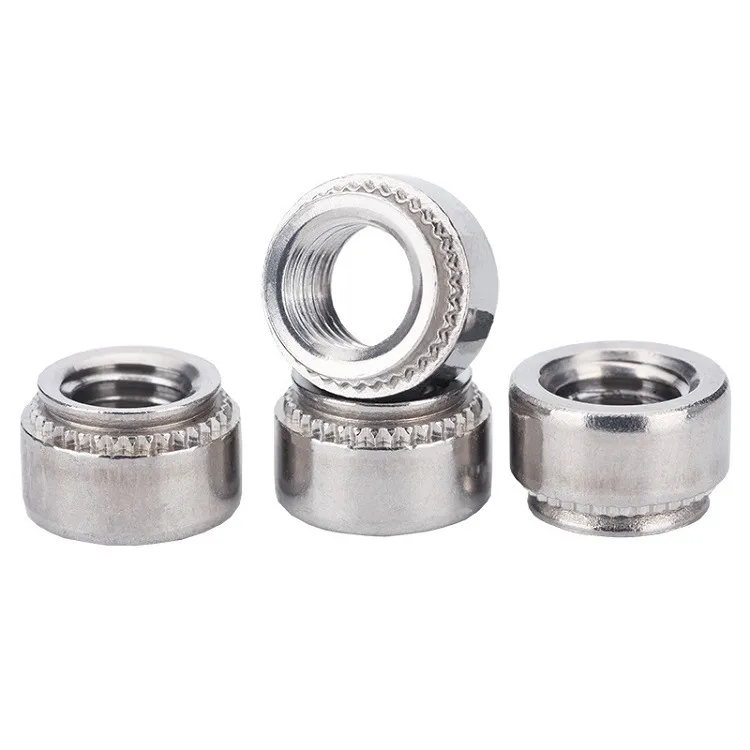
Column-shaped fasteners with a pressed base on one end and external threads on the other, used for connecting components.

Key Features:
Vertical load bearing with a single installation point.
High pull-out strength, suitable for vibrating environments.
Typical Applications:
Aerospace: Sensor brackets in lightweight cabin structures.
Communication Stations: Quick assembly of antenna modules.
Hollow standoffs with threads only on one end, used to isolate and fix multi-layer sheet metal structures.
Key Features:
Concealed installation, no protrusions on the back.
Adjusts the spacing between components to avoid short-circuit risks.
Typical Applications:
Server Cabinets: Insulated support between motherboard and metal rack.
LED Displays: Control of spacing between light boards and backplates.
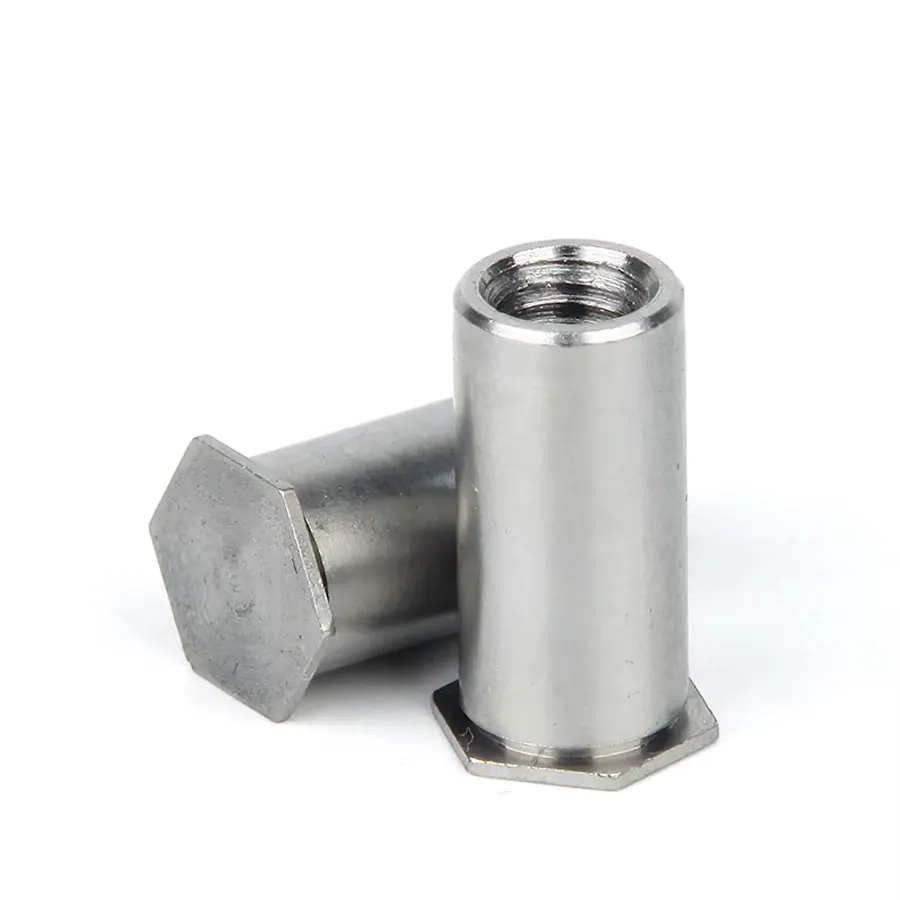
Standoffs with threads on both ends, allowing connection between upper and lower layers of structure.
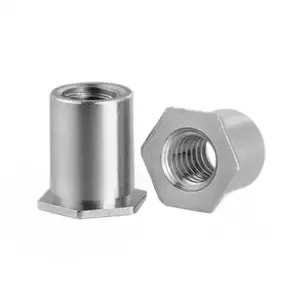
Key Features:
Easy to disassemble and maintain.
Supports bidirectional load transfer.
Typical Applications:
Rail Transportation: Multi-layer fixation of interior panels in carriages.
Robot Joints: Adjustable-height connecting components.
Table:Industry Application Analysis
| Industry | Pain Points & Needs | Recommended Types | Advantages |
| Electronics Enclosures | Lightweight design, EMI protection | Blind Threaded Standoffs | Insulation, space-saving |
| Automotive Components | Vibration resistance, corrosion resistance | Self-Clinching Studs + Waterproof Nuts | High strength, sealing properties |
| Enclosures & Cabinets | Quick assembly, heat dissipation | Through-Hole Threaded Standoffs + Self-Clinching Nuts | Optimized ventilation, easy maintenance |
| Aerospace | Weight reduction and reliability balance | Titanium Self-Clinching Fasteners | High strength-to-weight ratio, extreme temperature resistance |
Selection Recommendations
- Prioritize Lightweight Design: Choose materials such as aluminum or titanium alloys.
- Corrosive Environments: Opt for stainless steel with passivation or waterproof versions.
- Frequent Disassembly: Use through-hole standoffs with anti-loosening thread designs.
Do You Have Any Questions?
Let Us Solve Your Problem
6 Key Factors to Consider Before Purchasing

1. Material Compatibility
Fastener Material Selection:
Choose the material based on the environment and load requirements:
- Stainless Steel: High corrosion resistance, suitable for medical, chemical, and outdoor equipment.
- Aluminum Alloy: Ideal for lightweight designs, but with lower strength (avoid heavy load applications).
- Carbon Steel: Cost-effective choice, can be galvanized or phosphated for rust prevention.
Base Material Matching:
- The thermal expansion coefficient of the sheet metal should be close to that of the fastener (e.g., use aluminum fasteners with aluminum plates to reduce thermal deformation risk).
- Hardness Compatibility: The fastener should be slightly harder than the sheet metal (to avoid tearing of the base material during installation).
- Caution: Aluminum fasteners pressed into stainless steel plates may lead to engagement failure.
2. Load Requirements
Static Load Capacity:
Ensure the fastener’s tensile strength is greater than the actual maximum load multiplied by a safety factor (typically 1.5–2 times). For example, if a self-clinching nut has a nominal tensile strength of 2000N, the recommended working load should not exceed 1300N.
Dynamic Load and Vibration Resistance:
- For high-frequency vibration scenarios (e.g., automotive hoods), choose fasteners with anti-loosening designs (e.g., nylon locking rings or serrated threads).
- Dynamic load needs to be calculated based on thread specifications (the finer the thread pitch, the better the vibration resistance) and sheet metal thickness.
3. Installation Conditions
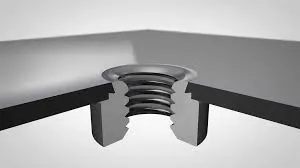
Sheet Metal Thickness:
Must strictly conform to the fastener’s installation thickness range (commonly 0.5–6mm). For instance:
- Too thin sheet metal (<0.5mm): Insufficient holding strength, prone to loosening.
- Too thick sheet metal (>6mm): May overload the tool or cause deformation of the base material during installation.
Pre-punched Hole Design:
- Round Holes (most common): Hole diameter tolerance should be controlled within ±0.05mm.
- Square/Custom-Shaped Holes: Used for specific applications (e.g., anti-rotation), requires custom mold costs.
4. Standards and Certifications
International Standards:
- ISO 15989: General performance standards for self-clinching fasteners.
- ASME B18.13: Thread specifications for the North American market.
- DIN 929: European standard for fastener installation dimensions.
Industry Certifications:
- Automotive: IATF 16949 (Quality Management Certification).
- Aerospace: AS9100 + NADCAP (Special Process Certification).
5. Surface Treatment
| Treatment Process | Applicable Scenarios | Lifespan (Neutral Environment) |
| Passivation | Regular indoor equipment (e.g., enclosures) | 5–8 years |
| Zinc Plating | Mildly humid environments (e.g., car chassis) | 8–12 years |
| Anodizing | High salt mist environments (e.g., marine equipment) | 12–15 years |
| PTFE Coating | Food/chemical equipment (acid and alkali resistance) | 15+ years |
6. Bulk Requirements and Supplier Capability
Small Batch Purchases (<1000 pieces):
Choose suppliers that support rapid prototyping and pay attention to MOQ (minimum order quantity) limitations.
Large Batch Purchases (>100,000 pieces):
Evaluate the supplier’s production capacity stability and delivery cycles. Prioritize local production bases to reduce logistics risks.
Guide to Selecting PEM Fastener Suppliers
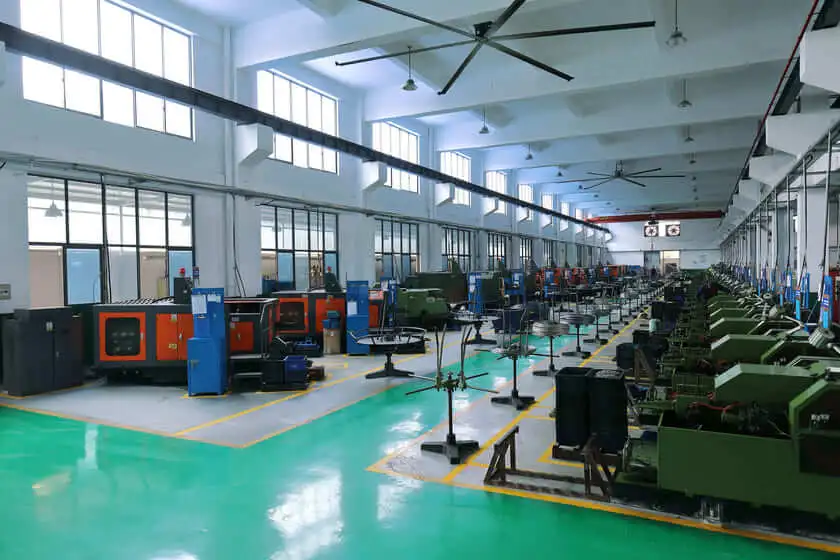
1. Supplier Qualification Review
Core Certifications:
- Basic Requirements: ISO 9001 (Quality Management System) + ISO 14001 (Environmental Management System).
- Industry-Specific Certifications:
- Automotive Industry: IATF 16949 (emphasizing process control and traceability).
- Aerospace: AS9100 + NADCAP (special process qualifications, such as heat treatment, surface treatment).
- Medical Devices: ISO 13485 (Medical Device Quality Management System).
Industry Experience:
- Prioritize suppliers specializing in self-clinching fasteners for over 5 years, and avoid intermediaries or general hardware distributors.
- Case Requirements: At least 3 successful projects in similar industries (e.g., fastening solutions for electric vehicle battery packs).
2. Technical Support Capabilities
| Service Type | Benchmark Supplier Performance | Inefficient Supplier Performance |
| Installation Guidance | Provides crimping parameters (pressure values, speed), tool selection advice | Only provides product manuals, no actual technical support |
| Engineering Design Assistance | Free finite element analysis (FEA) to simulate load and failure risks | Refuses to assist in early design stages, requires the customer to verify on their own |
| Resource Documentation | Provides 3D models (STEP/IGES files), installation video library | Only provides PDF drawings, no dynamic presentations |
3. Sample Policy and Testing Support
Free Sample Standard:
- High-Quality Suppliers: Offer 5–10 free samples for the first order (customer only pays for shipping).
- Cautionary Clause: Beware of suppliers that require prepayment of high sample fees or impose minimum purchase quantities.
Testing Support:
- Mandatory Tests: ① Tensile Strength Test (to verify the nominal load strength). ② Salt Spray Test (to evaluate corrosion resistance). ③ Installation Compatibility Test (to check sheet metal deformation).
- Collaboration Model: Prioritize suppliers that offer “on-site testing” for customers.
4. Logistics and Delivery Reliability
Delivery Transparency:
- Require suppliers to disclose their production schedules (e.g., sharing progress via ERP systems).
- Industry Benchmark: Standard parts delivery ≤4 weeks, customized parts ≤8 weeks.
Emergency Handling Capability:
- Urgent Orders: Confirm whether the supplier supports expedited orders (typically 30%–50% additional cost).
- Backup Solutions: Assess whether the supplier has multi-region warehousing or backup production lines.
Logistics Assurance:
- Damage-Resistant Packaging: Ensure fasteners are packaged with surface protection (no bulk shipments).
- Delivery Tracking: Provide real-time tracking information (e.g., DHL/UPS tracking number).
Do You Have Any Questions?
Let Us Solve Your Problem
Buy PEM Fasteners - FAQs
Q1: What Could Be the Reasons for PEM Fasteners Loosening or Detaching After Installation?
- Incorrect Installation Parameters:
- Check if the pressure values meet the supplier’s specifications (refer to the supplier’s parameter sheet).
- Ensure the crimping equipment is aligned properly, with a deviation of less than 1°.
- Mismatched Pre-punched Holes:
- Measure the hole diameter to ensure it meets tolerance (e.g., for an M4 nut, the hole diameter should be 4.8±0.05mm).
- Clean any burrs from the punched holes (it is recommended to use a chamfering tool).
- Material Thickness Issues:
- Ensure the sheet metal thickness falls within the allowable range for the fastener.
Temporary Solution: Spot welding (only for non-visible areas, with a later assessment of the removal risks).
Q2: Can PEM Fasteners Replace Traditional Welded Nuts?
Replacement is possible under the following conditions:
- Sheet Metal Thickness Compatibility: PEM fasteners typically require thinner materials than welded nuts (e.g., 0.5~6mm vs. welded nuts’ minimum 1.5mm thickness).
- Material Compatibility: The base material should have sufficient ductility (e.g., aluminum and low-carbon steel are suitable, while high-carbon steel may require annealing).
| Metric | PEM Fasteners | Welding |
| Time per Fastener (Single Point) | 3 seconds | 15 seconds (including grinding) |
| Long-Term Maintenance Cost | Close to zero | High risk of weld corrosion |
Q3: How to Choose PEM Fasteners for Corrosive Environments (e.g., Coastal Areas)?
Recommended Selection Strategy:
- Material Selection: Prioritize 316 stainless steel (resistant to chloride ion corrosion) or titanium alloys (marine engineering grade).
- Surface Treatment: For high salt mist environments (e.g., >1000 hours in neutral salt spray testing): Opt for PTFE coating or passivation with sealing treatment.
- Sealing Design: Pair with EPDM rubber washers (especially for sealing nuts like the PEM® WS series).
Q4: How to Resolve Sheet Metal Deformation or Bulging on the Back Side After Installation?
Troubleshooting Based on Different Scenarios:
- Even Bulging:
- Cause: Excessive crimping force causing the material to stretch and accumulate.
- Solution: Reduce the pressure by 10%~15%, or use a larger flange diameter fastener.
- Localized Deformation:
- Cause: Misalignment of the crimping head or offset pre-punched hole center.
- Solution: Calibrate the crimping tool for proper centering (using laser positioning for assistance).
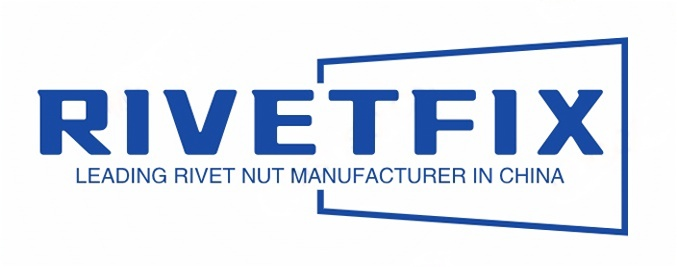
With 15+ years of experience in fastener manufacturing, Rivetfix has grown into a trusted global supplier. Today, we have a dedicated team of 200+ skilled production workers and 40+ professional sales representatives, ensuring seamless service and reliable supply.
Our vision is simple yet powerful: to provide the highest-quality fasteners at competitive prices to customers worldwide. In doing so, we combine precision manufacturing, efficient operations, and exceptional customer support. As a result, we are committed to helping businesses build stronger, more cost-effective solutions. Through this approach, we aim to consistently exceed customer expectations and foster long-term partnerships.
Partnering with Rivetfix means stable supply, top-quality fasteners, and custom solutions. We help you cut costs, boost efficiency, and enhance durability. Expect on-time delivery, expert support, and innovation. Buy PEM fasteners now!
Get High Quality Rivet Nuts Quote!
Send Your Rivet Nut Request
For more than 20 years, Rivetfix has helped customers solve many rivet nuts sourcing needs and technical challenges.
Have a question? Contact us and we’ll provide you with the perfect solution.

